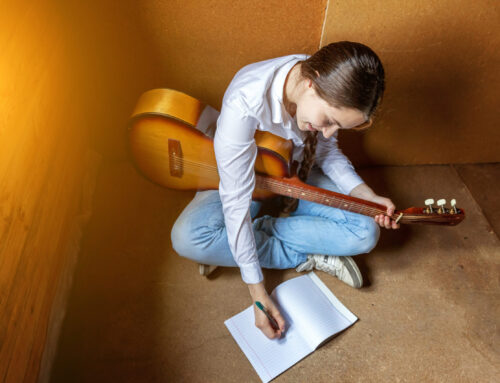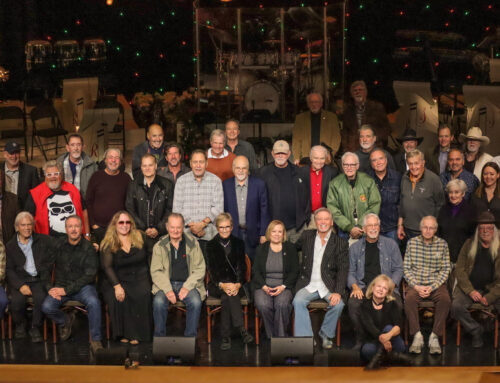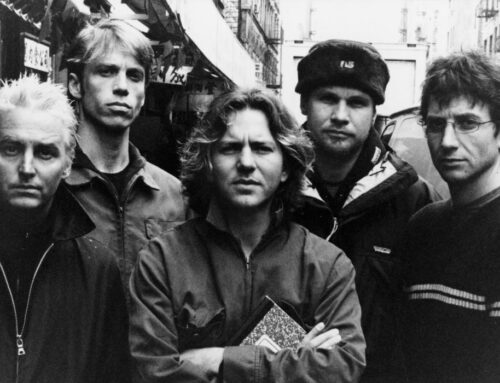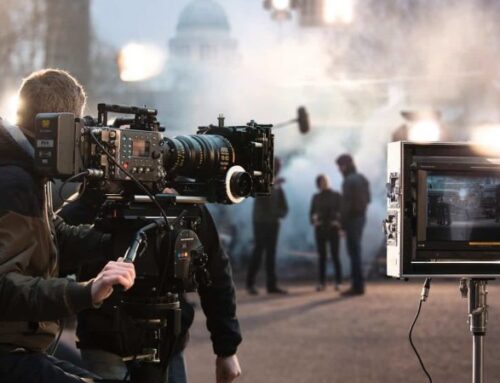Written by Amber Shultz*
Edited by Barry Neil Shrum, Esq.
A recent headline on the BBC News was “Jersey Gorilla Turns Photographer at Durrell Park.” The story was about a silverback gorilla at Durrell Wildlife Park in New Jersey named Ya Kwanza, who was given a high-definition camera in an indestructible box. While examining the bazaar looking box, the gorilla inadvertently took a series of self portraits. Can these photographs, indisputably taken by Ya Kwanza, be described as original and creative? If so, are they entitled to protection pursuant to U.S. copyright law, thus giving certain rights to the gorilla?
of self portraits. Can these photographs, indisputably taken by Ya Kwanza, be described as original and creative? If so, are they entitled to protection pursuant to U.S. copyright law, thus giving certain rights to the gorilla?
This begs the question, “What makes a photograph original and protectable under copyright?” This query has perplexed copyright lawyers and courts since photography became protectable under copyright law. Traditionally, the courts have used the concept of an idea/expression dichotomy in order to set the perimeters of an expressed idea within the art of photography.
 One of the first cases analyzing the protection of photography under copyright law is the 1884 case of Burrow-Giles Lithographic Co. v. Sarony. In this case, a well-known photographer, Napoleon Sarony, filed a lawsuit against Burrow-Giles Lithographic Company for marketing his photographs of the writer Oscar Wilde without his permission. The court ruled in favor of Sarony, upholding the section of the Copyright Act of 1870 that extended copyright to photographic works. In its defense, Burrow-Giles argued that photography was not “art” but rather, mere mechanics. The court disagreed and found that Sarony’s photo of Wilde was an original expression of an idea. In doing so, the court found that the scene set by Sarony in his photo, including the way he posed Wilde, the background he chose, and similar factors, moved the photograph closer to an original expression than a mere idea. This decision was an early precursor to using expression in a photographic work as a means of identifying which works are protected under copyright law.
One of the first cases analyzing the protection of photography under copyright law is the 1884 case of Burrow-Giles Lithographic Co. v. Sarony. In this case, a well-known photographer, Napoleon Sarony, filed a lawsuit against Burrow-Giles Lithographic Company for marketing his photographs of the writer Oscar Wilde without his permission. The court ruled in favor of Sarony, upholding the section of the Copyright Act of 1870 that extended copyright to photographic works. In its defense, Burrow-Giles argued that photography was not “art” but rather, mere mechanics. The court disagreed and found that Sarony’s photo of Wilde was an original expression of an idea. In doing so, the court found that the scene set by Sarony in his photo, including the way he posed Wilde, the background he chose, and similar factors, moved the photograph closer to an original expression than a mere idea. This decision was an early precursor to using expression in a photographic work as a means of identifying which works are protected under copyright law.
Photography is a medium of art that can stretch our concept of “originality” and the idea/expression dichotomy. While it may be true that the act of making a photo is mostly mechanics, it is also true that the act of photography can, in some cases, be considered an art. Courts have consistently applied these principles, not only stopping others from directly copying a photograph but also from creating an imitation of a photograph by copying the style, angle, lighting, and any other artistic or expressive notions the photographer might have used in his photograph. Courts also apply this to derivative works based on photographs, such as statutes or paintings imitating the photograph.
According to copyright lawyer Steven Ayr, “courts have set up a system to describe the various ways a photograph can be original and therefore the various ways in which it’s protected by copyright.” Ayr states that there are three ways in which a photograph is original and therefore protected under copyright law: timing, rendition, and creation of the subject. Timing, he says, is the most basic and least original aspect of a photograph, and provides the least amount of protection for a photograph. Timing basically means that the photographer was in the right place at the right time; the photographer took the photo at the exact perfect time for his photo to be a beautiful piece of art. But what Ayr seems to miss in this analysis of “timing” is its relationship to the element of exposure selected by the photographer. While a lot has to do with being at the right place at the right time, an equal emphasis might be placed on the photographer’s ability and knowledge in selecting the exact right exposure to capture the moment he or she is attempting to capture. By grouping the element of exposure into the second factor, addressed below, Ayrs overlooks the undefinable element of synchronicity that makes this element more critical.
The second element, according to Ayrs, is “rendition,” which has to do with the aesthetic elements the photographer chooses to use in the photograph, such as special effects, the angle, lighting, and the type of camera or lens used to shoot the photo. In many court cases, infringement is determined by the amount of these types of choices made by the plaintiff, which are compared to the accused work to determine how closely related, or similar the copy is to the original photograph.
The third element Ayrs identifies is something he calls “creation of the subject,” by which he essentially means that the photo is original in the way that the creator sets the scene for the photograph. According to Ayrs, the subject selected in creation may achieve sufficient originality to allow the photographer to obtain protection over the subject itself, whereas timing only allows the protection of the reproduction of the subject, and rendition only protects the view of the subject.
These three concepts of originality in a photograph proposed by Ayr interact to form the basis of protection. For example, he identifies two instances in which the originality of a work can be determined quite easily and result in infringement of another photographers work: the first is when someone duplicates the original photograph and the second is when the photographer’s creative choices, such as angle, lighting, positioning, are imitated. In terms of copyright law, in other words, when the copy incorporates protected elements of the original. The first can be illustrated by the court case of Burrow-Giles Lithographic Co. v. Sarony. The second instance can be found in numerous court cases, but one that is particularly applicable is the case of Mannion v. Coors Brewing Co.
 In Mannion, a freelance photographer sued Coors for copying his photograph of Kevin Garnett in SLAM magazine. Coors created, “a manipulated version of the Garnett photograph and superimposed on it the words ‘Iced Out’ (“ice” is slang for diamonds) and a picture of a can of Coors Light beer…” The Mannion court used the three concepts identified by Ayrs in finding the Garnett photograph to be original. The Court used the concept of rendition when it declared that “originality . . . does not depend on creation of the scene or object to be photographed…
In Mannion, a freelance photographer sued Coors for copying his photograph of Kevin Garnett in SLAM magazine. Coors created, “a manipulated version of the Garnett photograph and superimposed on it the words ‘Iced Out’ (“ice” is slang for diamonds) and a picture of a can of Coors Light beer…” The Mannion court used the three concepts identified by Ayrs in finding the Garnett photograph to be original. The Court used the concept of rendition when it declared that “originality . . . does not depend on creation of the scene or object to be photographed…
Though the Mannion court also gave a nod to Ayr’s timing concept when it stated that “the memorability of [the photograph]… is attributed in significant part to timing of its creation.” In the end, however, the Court did not directly apply the concept of timing to the case.
 Lastly the Mannion court found that originality occurs when a photograph creates of the subject, the final and most important of Ayr’s concepts. When the Mannion court applied this concept to the plaintiff’s photograph, it found that Mannion’s photo was a “composition – posing man against sky – [that] evidences originality in the creation of the subject.” Accordingly, this protected not only the portrayal of what was being photographed, but the scene or subject that was created by the photographer when he took the photograph, allowing Mannion to “prevent others from duplicating that scene in a photograph or other medium.” In the end, the court ruled in favor of Mannion and declared Coors photo an infringement of Mannion’s original photo.
Lastly the Mannion court found that originality occurs when a photograph creates of the subject, the final and most important of Ayr’s concepts. When the Mannion court applied this concept to the plaintiff’s photograph, it found that Mannion’s photo was a “composition – posing man against sky – [that] evidences originality in the creation of the subject.” Accordingly, this protected not only the portrayal of what was being photographed, but the scene or subject that was created by the photographer when he took the photograph, allowing Mannion to “prevent others from duplicating that scene in a photograph or other medium.” In the end, the court ruled in favor of Mannion and declared Coors photo an infringement of Mannion’s original photo.
The originality elements of a photograph are further illustrated in the court case of Eastern America Trio Products, Inc. v. Tang Electronic Corp. In this case, Eastern America sued Tang Electronic for copyright infringement of some of the product photographs in their catalogs and flyers. Although the defendant acknowledged copying some of the photographs in the catalogs, they stated the similarities of their pictures to the plaintiff’s photographs did not constitute copyright infringement, because the subjects were not original, nor were the photographs.
The Eastern America court disagreed, ruling that the elements of the photographs met the requirements for “originality,” and could therefore be protected by copyright. The photographer “supervised the layout-out of the items that were photographed, positioned them in what she thought [was] an attractive manner, selected particular angles and lighting, and in some cases even had the images enhanced by a computer to achieve the desired outcome.” The court found that the defendant infringed the originals, in as much as it had access to the original flyers and catalogs and that many of the defendant’s photographs were, in fact, copies of the plaintiff’s originals.
 While these courts clearly uphold the principal that originality can be achieved in photography, there are other courts that hold a contrary view and do not consider the photograph a protectable means of expression. These contrarian courts use a more abstract approach, finding that the elements of the expression are not original enough to be protected by copyright law. One such example is the case of Kaplan v. Stock Market Photo Agency, Inc. which has a very similar fact pattern to Mannion. In Kaplan, Peter Kaplan, the plaintiff, took a photograph named “Wing Tips Over the Edge,” depicting “a businessperson standing perilously on the ledge or roof of a tall building, looking down onto a car-lined street. It is taken from the viewpoint of the businessperson.”
While these courts clearly uphold the principal that originality can be achieved in photography, there are other courts that hold a contrary view and do not consider the photograph a protectable means of expression. These contrarian courts use a more abstract approach, finding that the elements of the expression are not original enough to be protected by copyright law. One such example is the case of Kaplan v. Stock Market Photo Agency, Inc. which has a very similar fact pattern to Mannion. In Kaplan, Peter Kaplan, the plaintiff, took a photograph named “Wing Tips Over the Edge,” depicting “a businessperson standing perilously on the ledge or roof of a tall building, looking down onto a car-lined street. It is taken from the viewpoint of the businessperson.”
Kaplan copyrighted his photograph and published in a compilation with other photos called “The Creative Black Book.” Kaplan submitted his photograph to a contest held by an ad agency to find artwork for a client who manufactured camera lenses. Kaplan sent in his photograph to the ad agency, but they choose another photographer’s work that depicted a very similar scene to Kaplan’s photograph. The winning photograph used the same perspective. Kaplan sued the winning photographer stating that the similar concept infringed his copyright. The court acknowledged plaintiff’s copyright, but found that the only similar elements between the two photos were not entitled to copyright protection and therefore, the defendant had not misappropriated. In other words, the similarities between the original and the alleged copy was an “idea,” and not a protectable expression, so the defendant did not infringe Kaplan’s copyright. The court summarized that “…after a careful examination of the two photographs at issue here, [we] conclude that the differences between [the two photographs] far outweigh the similarities, quantitatively and qualitatively, such that no reasonable jury could find that the two works are substantially similar.” Therefore, the court ruled for the defendant. This case illustrates that one may have an expression of idea that is not original.
So how do we determine the originality of a photograph? While it may be easy to see similarities between a few photos, coincidence does not particularly mean that there is actual copying, much less actual infringement. Elements of a photograph that are closer to ideas or concepts are not protectable by copyright, and as such are not considered original expressions. A photograph is, at its essences, merely a mechanical and/or chemical reaction to reflected light. In fact, it is the very nature of photography that makes it hard to determine the originality of a photograph. It is the photographer’s creative expression of those mechanics that make the difference, just as a painter’s creative application of pigments can create an original expression.
If the photographer is creative in the selection of subject matter, lighting, rendition, and how he or she arranges the scene of their photograph, the photographer may create an original expression, one that he or she might be able to protect. But still too many courts have difficulty determining whether an element of a photograph is an idea or an expression. In these instances, some judges seem unqualified to make substantive artistic choices, or are simply not creative. While there are some guidelines for defining “originality” of a photograph, such as those of timing, rendition, and the creation of the subject as proposed by Ayrs, there is no guarantee as to the outcome. Courts still struggle to determine the originality of a photograph, especially when determining where the elements of the original photograph fall along the idea/expression dichotomy continuum. In considering photography and its relation to the idea/expression continuum, the closer a particular element in a photograph moves along the continuum from a mere idea to an expression, the more likely it is to be original and protected in court and by copyright. The more artistically attuned a court can be, the more accurate its decision.
*Amber was a top student in my Copyright Law class at Belmont University’s Mike Curb School of Music Business in Spring 2013.






